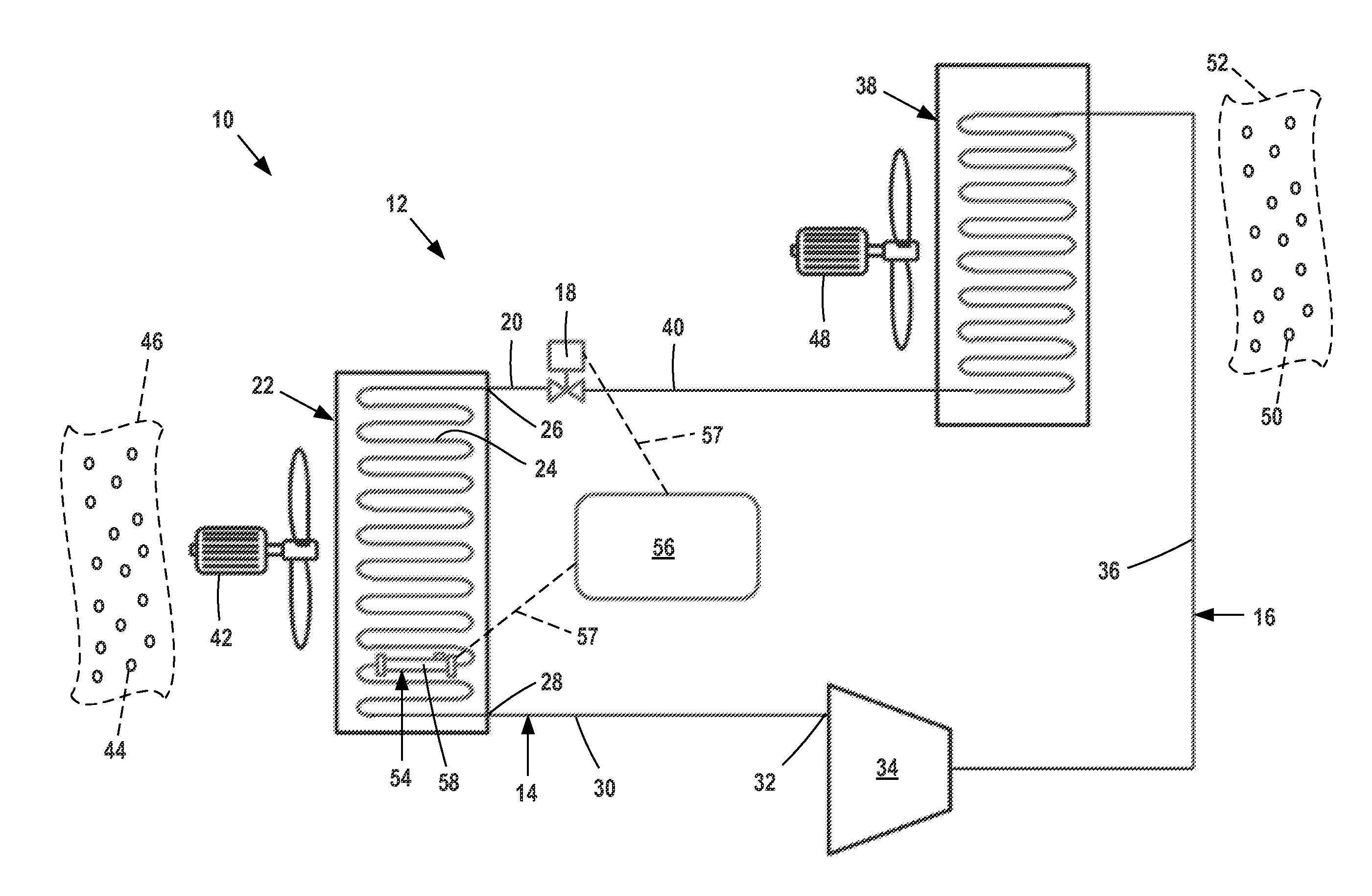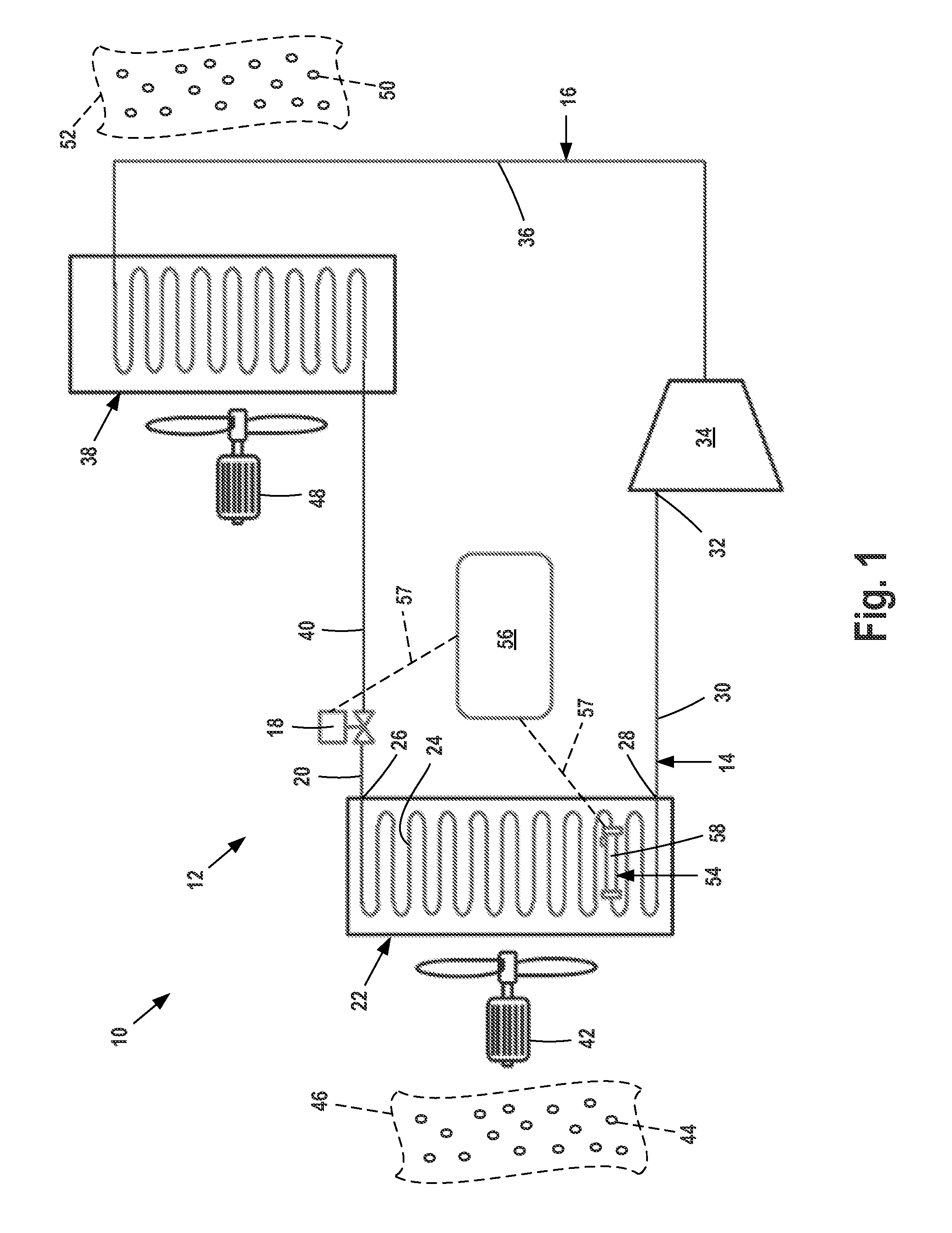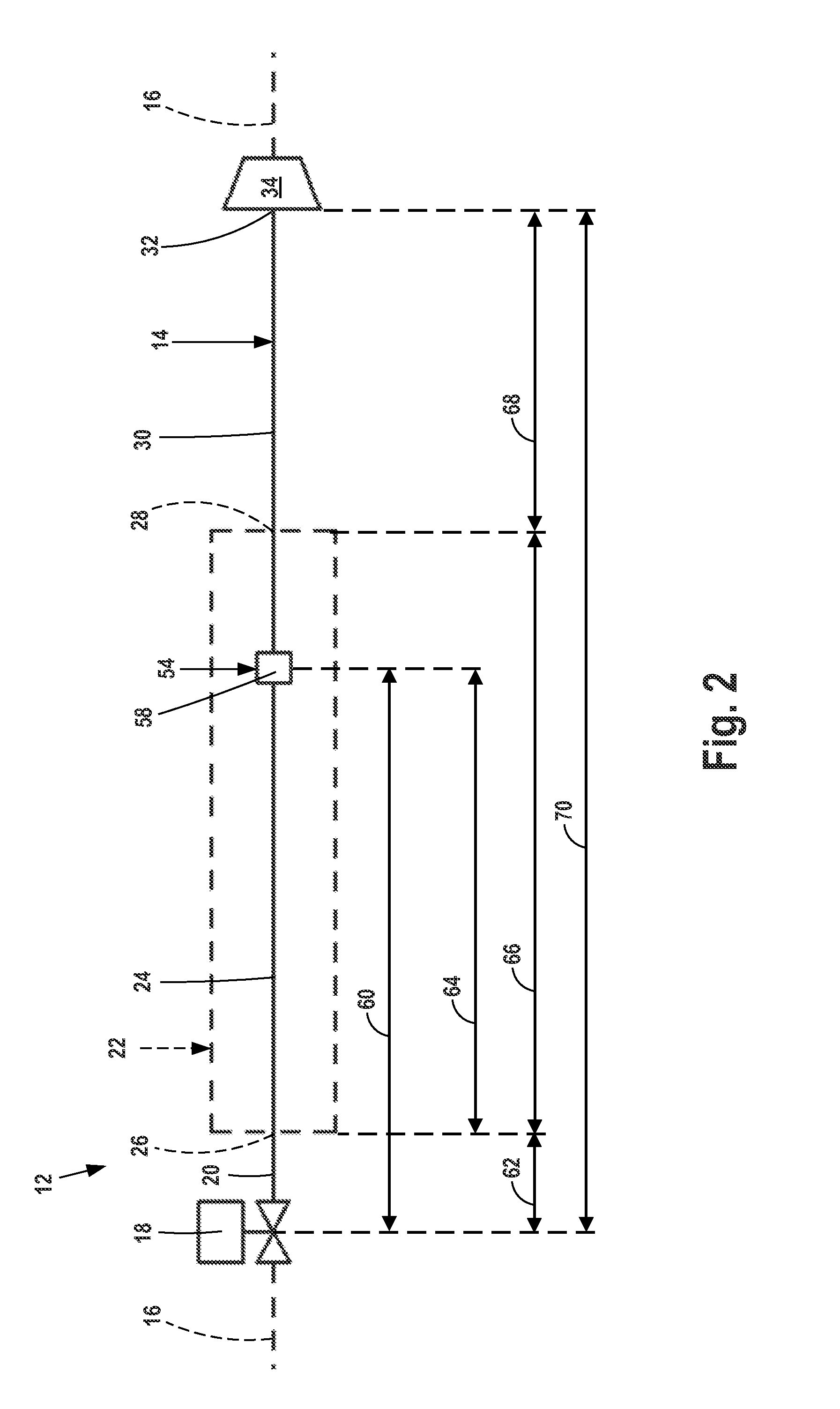Refrigeration Circuit Control System
a refrigeration circuit and control system technology, applied in refrigeration components, mechanical equipment, lighting and heating equipment, etc., can solve problems such as reducing refrigeration circuit efficiency, and presenting risks in large-scale refrigerant applications such as toxic inhalation, fire and explosion, etc., to achieve efficient increase
- Summary
- Abstract
- Description
- Claims
- Application Information
AI Technical Summary
Benefits of technology
Problems solved by technology
Method used
Image
Examples
Embodiment Construction
[0047]FIG. 1 is a representational view of a control system 10 for monitoring and controlling a refrigeration circuit 12.
[0048]Refrigeration circuit 12 includes circuit low pressure side or low side 14 and circuit high pressure side or high side 16.
[0049]Low side 14 and high side 16 are each made up of fluid lines and circuit components that circulate a working fluid refrigerant (not illustrated) during operation of refrigeration circuit 12.
[0050]Low side 14 extends from metering control valve 18 through evaporator input line 20 and through evaporator 22. Evaporator line 24 extends from evaporator inlet 26 to evaporator outlet 28. Low side 14 continues through evaporator output line 30 and ends at compressor inlet 32.
[0051]Metering control valve 18 may be a motorized expansion valve or like valve. Valve 18 is capable of being actuated electronically by a controller from a closed state to a desired degree of openness in order to control refrigerant flow through the valve at a desired...
PUM
 Login to View More
Login to View More Abstract
Description
Claims
Application Information
 Login to View More
Login to View More - R&D
- Intellectual Property
- Life Sciences
- Materials
- Tech Scout
- Unparalleled Data Quality
- Higher Quality Content
- 60% Fewer Hallucinations
Browse by: Latest US Patents, China's latest patents, Technical Efficacy Thesaurus, Application Domain, Technology Topic, Popular Technical Reports.
© 2025 PatSnap. All rights reserved.Legal|Privacy policy|Modern Slavery Act Transparency Statement|Sitemap|About US| Contact US: help@patsnap.com



